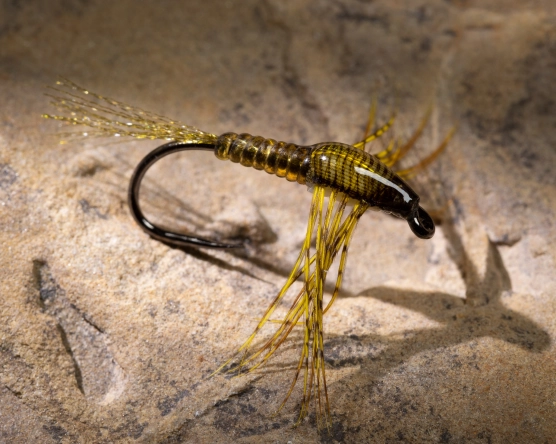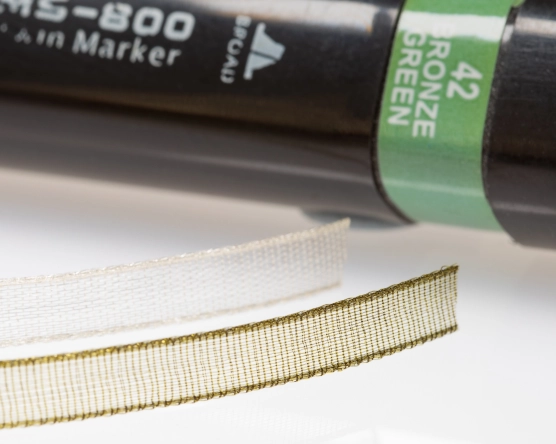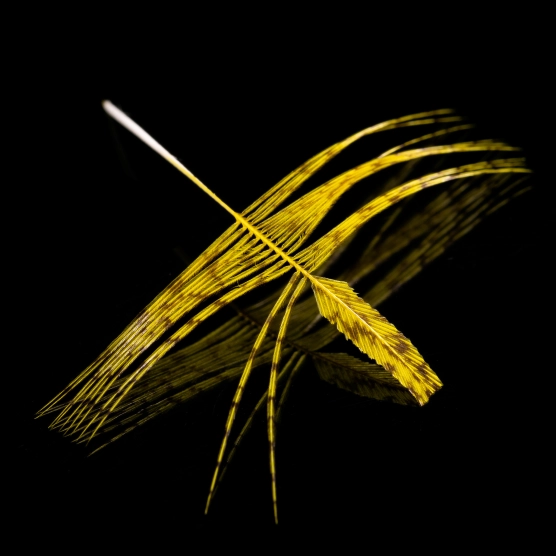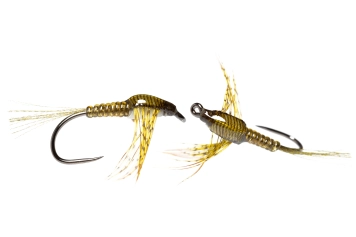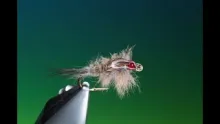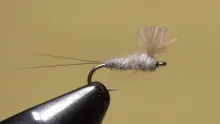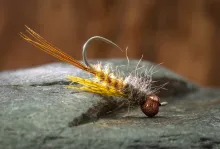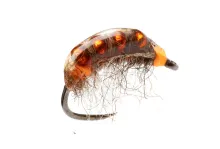The Combover is a generic mayfly nymph imitation. It gets its name from the hairstyle, now thankfully rarely seen.
The Combover is a generic mayfly nymph imitation, or approximation if you prefer. It gets its name from the hairstyle, now thankfully rarely seen, where balding men comb sparse strands of hair over a bare patch and plaster it down with some form of goo. It’s not a good look. It’s unlikely that Messrs Statham, Johnson, Diesel or Willis would have much of an action film career sporting such a tonsorial disaster.
On the Combover nymph however, it’s a good look. A single partridge feather over bald nymph skin and protected by an organza ribbon mesh makes a great looking two-tone thorax with a neat row of legs on each side.
Fibres from organza ribbon are also used to make the tails. If you’ve never tied with this versatile material before, the Combover is a good pattern to try it out. Narrow 3 mm wide ribbon is available from craft shops or online, and if you buy white or cream ribbon you can colour it in natural tones with permanent marker pens.
The ribbon is made from very fine nylon fibres with tightly woven edges. The middle of the ribbon has fibres which run from side to side and others which run the length of the ribbon. Cutting off one edge and pulling out the long fibres gives a synthetic herl which can be used to tie a wide variety of fly patterns.
To prepare the ribbon for tying a Combover cut off a length and colour it on both sides with a marker pen. Snip off a piece, trim away one edge and pull out the long fibres, the point of a dubbing needle can be useful here. Set the fibres aside ready for tying the tail.
The next step is to prepare the partridge hackle for the legs. Select a feather with barbs that are the length you want your nymph’s legs to be. Strip off the fluff and fibres at the base, hold the tip of the feather and pull back the barbs to isolate a section that will form the legs. Trim off the fibres on either side of the tip leaving the full-length barbs for the legs. Now you are ready to tie.
Nick Thomas
When tied as described above the Combover is just under 25mm/1 inch long overall. You can tie it smaller or larger and in different colours to suit the various nymphs in your lakes or rivers. It’s a versatile and effective pattern. Like many of my fly designs, it’s not intended to be a specific imitation, it’s a framework on which to build flies that meet the DILLFF? criteria. Does it look like fish food? Yes, it does.
Does it look like fish food? Yes, it does.
- Log in to post comments

